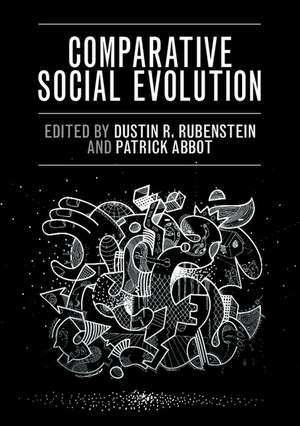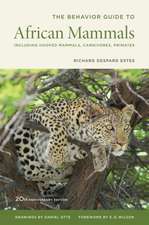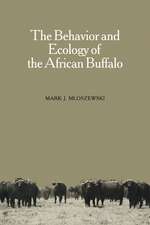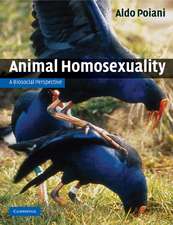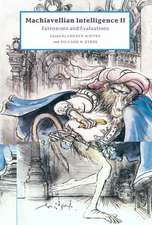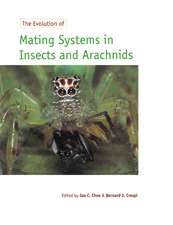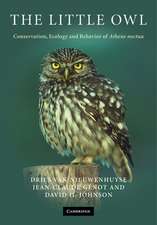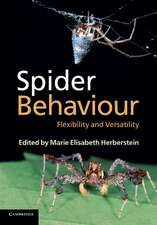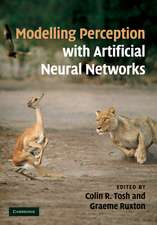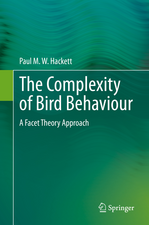Comparative Social Evolution
Editat de Dustin R. Rubenstein, Patrick Abboten Limba Engleză Paperback – 23 mar 2017
| Toate formatele și edițiile | Preț | Express |
|---|---|---|
| Paperback (1) | 441.98 lei 3-5 săpt. | |
| Cambridge University Press – 23 mar 2017 | 441.98 lei 3-5 săpt. | |
| Hardback (1) | 712.39 lei 6-8 săpt. | |
| Cambridge University Press – 5 apr 2017 | 712.39 lei 6-8 săpt. |
Preț: 441.98 lei
Preț vechi: 496.61 lei
-11% Nou
Puncte Express: 663
Preț estimativ în valută:
84.58€ • 87.98$ • 69.83£
84.58€ • 87.98$ • 69.83£
Carte disponibilă
Livrare economică 25 martie-08 aprilie
Preluare comenzi: 021 569.72.76
Specificații
ISBN-13: 9781107647923
ISBN-10: 1107647924
Pagini: 476
Ilustrații: 34 b/w illus. 13 tables
Dimensiuni: 174 x 246 x 20 mm
Greutate: 0.94 kg
Editura: Cambridge University Press
Colecția Cambridge University Press
Locul publicării:New York, United States
ISBN-10: 1107647924
Pagini: 476
Ilustrații: 34 b/w illus. 13 tables
Dimensiuni: 174 x 246 x 20 mm
Greutate: 0.94 kg
Editura: Cambridge University Press
Colecția Cambridge University Press
Locul publicării:New York, United States
Cuprins
1. The evolution of social evolution Dustin R. Rubenstein and Patrick Abbot; Part I. Invertebrates: 2. Sociality in ants Jürgen Heinze, Katrina Kellner and Jon Seal; 3. Sociality in bees William Wcislo and Jennifer H. Fewell; 4. Sociality in wasps James H. Hunt and Amy L. Toth; 5. Sociality in termites Judith Korb and Barbara Thorne; 6. Sociality in aphids and thrips Patrick Abbot and Tom Chapman; 7. Sociality in spiders Leticia Avilés and Jennifer Guevara; 8. Sociality in shrimps Kristin Hultgren, J. Emmett Duffy and Dustin R. Rubenstein; Part II. Vertebrates: 9. Sociality in primates Joan B. Silk and Peter M. Kappeler; 10. Sociality in non-primate mammals Jennifer E. Smith, Eileen A. Lacey and Loren D. Hayes; 11. Sociality in birds Andrew Cockburn, Ben J. Hatchwell and Walter D. Koenig; 12. Sociality in fishes Michael Taborsky and Marian Wong; 13. Sociality in lizards Martin J. Whiting and Geoffrey M. While; 14. Social synthesis: opportunities for comparative social evolution Dustin R. Rubenstein and Patrick Abbot.
Recenzii
'This authoritative book will be an excellent resource for all students of social evolution, including practised hands and those yet to take the stage. Covering all the major groups of social organisms in both the invertebrates and vertebrates, its expert authors systematically set out the social and associated traits of their favoured taxa. A tight editorial structure ensures a uniformity of approach that readers, typically familiar with just one or a few groups but eager to broaden their outlook, will greatly appreciate. In their closing synthesis, the editors describe the book as a 'starting point' for the comparative social evolutionary studies of the future. It will surely help stimulate a renaissance in such studies, but the editors are too modest; they and the authors have already performed an admirable service to the discipline in bringing together such a rich synthesis of information and insight.' Andrew Bourke, University of East Anglia
'Comparative Social Evolution provides a unique attempt to identify contrasts and similarities in the distribution and evolution of social behaviour in different groups of animals. Successive chapters describe the structure of social groups in different taxa, ranging from aphids to primates, and their relationship to variation in life history parameters, breeding systems and genetic structure, each written by leading researchers in their field. By synthesizing current knowledge of the distribution of social behaviour and its correlates in different groups, Comparative Social Evolution lays the foundation for attempts to build a general framework capable of explaining the diversity of animal societies.' Tim Clutton-Brock, University of Cambridge
'Social interactions define how life is organized, from molecules to microbes, in the ocean and on land. There has been a revolution in our understanding of life that is based on an appreciation of the importance of social behavior. Social evolution theory, particularly kin selection, has changed our view of conflicts within organisms like cancer and imprinting, and of how microbes interact and affect us, to give two key examples. But the theory that has developed to explain these interactions comes nearly entirely from observations of animals in their native habitats. This book provides a fabulous compilation of the biology of social interactions in animals. The chapters are clearly and carefully written by leaders in their fields. This book is a must-read for anyone who wants to know where the theories are rooted, or anyone who simply wants to enjoy the marvellous stories of animal social behaviour.' Joan Strassmann, Washington University, St Louis
'Powerful, elegant theory guides our understanding of animal social behavior, but an historical tradition of confining empirical insights to particular taxonomic and methodological silos means the devil remains in the detail. This excellent volume resolves this issue by imposing a strict framework to each taxon-focused chapter, thereby allowing readers to gain invaluable, perhaps unprecedented insights from chapters outside their taxonomic comfort zone. The canny will read the book cover to cover, recognizing that the editors have facilitated creative debate in the grand comparative tradition - uncluttered by taxon-specific misunderstandings.' Mark Elgar, University of Melbourne, Australia
'Comparative Social Evolution provides a unique attempt to identify contrasts and similarities in the distribution and evolution of social behaviour in different groups of animals. Successive chapters describe the structure of social groups in different taxa, ranging from aphids to primates, and their relationship to variation in life history parameters, breeding systems and genetic structure, each written by leading researchers in their field. By synthesizing current knowledge of the distribution of social behaviour and its correlates in different groups, Comparative Social Evolution lays the foundation for attempts to build a general framework capable of explaining the diversity of animal societies.' Tim Clutton-Brock, University of Cambridge
'Social interactions define how life is organized, from molecules to microbes, in the ocean and on land. There has been a revolution in our understanding of life that is based on an appreciation of the importance of social behavior. Social evolution theory, particularly kin selection, has changed our view of conflicts within organisms like cancer and imprinting, and of how microbes interact and affect us, to give two key examples. But the theory that has developed to explain these interactions comes nearly entirely from observations of animals in their native habitats. This book provides a fabulous compilation of the biology of social interactions in animals. The chapters are clearly and carefully written by leaders in their fields. This book is a must-read for anyone who wants to know where the theories are rooted, or anyone who simply wants to enjoy the marvellous stories of animal social behaviour.' Joan Strassmann, Washington University, St Louis
'Powerful, elegant theory guides our understanding of animal social behavior, but an historical tradition of confining empirical insights to particular taxonomic and methodological silos means the devil remains in the detail. This excellent volume resolves this issue by imposing a strict framework to each taxon-focused chapter, thereby allowing readers to gain invaluable, perhaps unprecedented insights from chapters outside their taxonomic comfort zone. The canny will read the book cover to cover, recognizing that the editors have facilitated creative debate in the grand comparative tradition - uncluttered by taxon-specific misunderstandings.' Mark Elgar, University of Melbourne, Australia
Descriere
A comparative view of the major features of animal social life and the evolution of cooperative group living.
